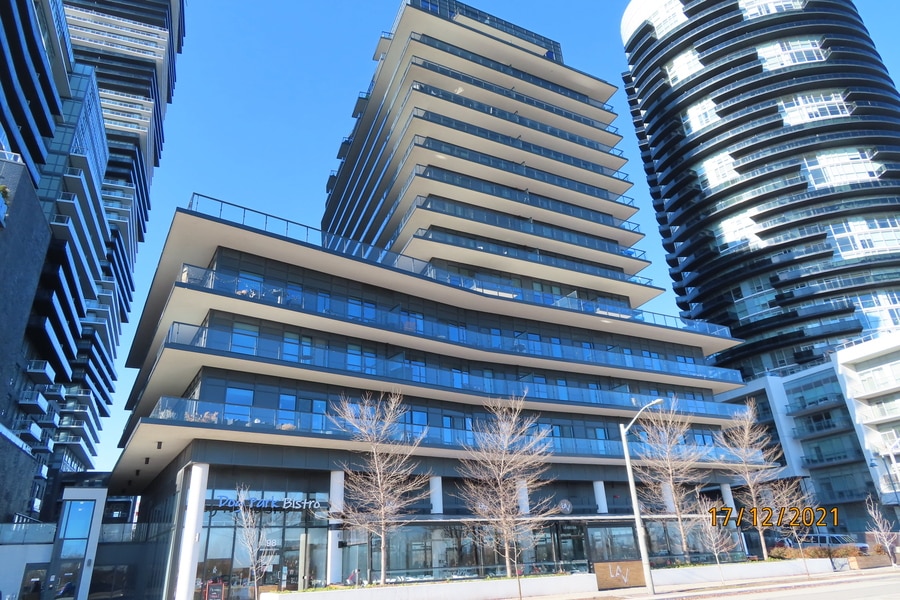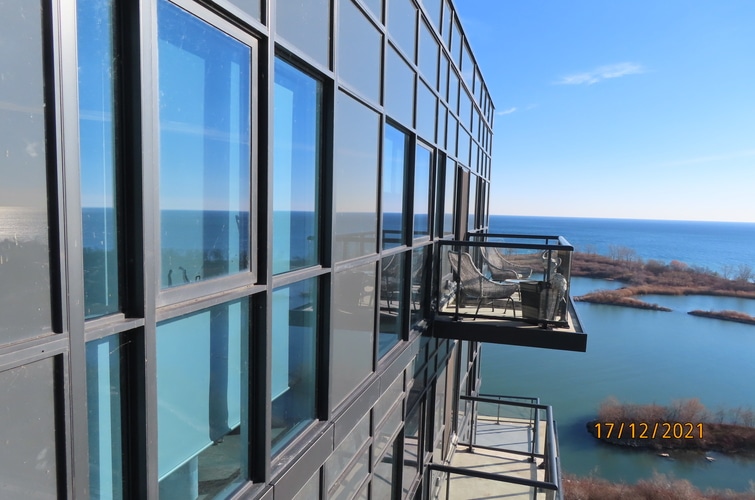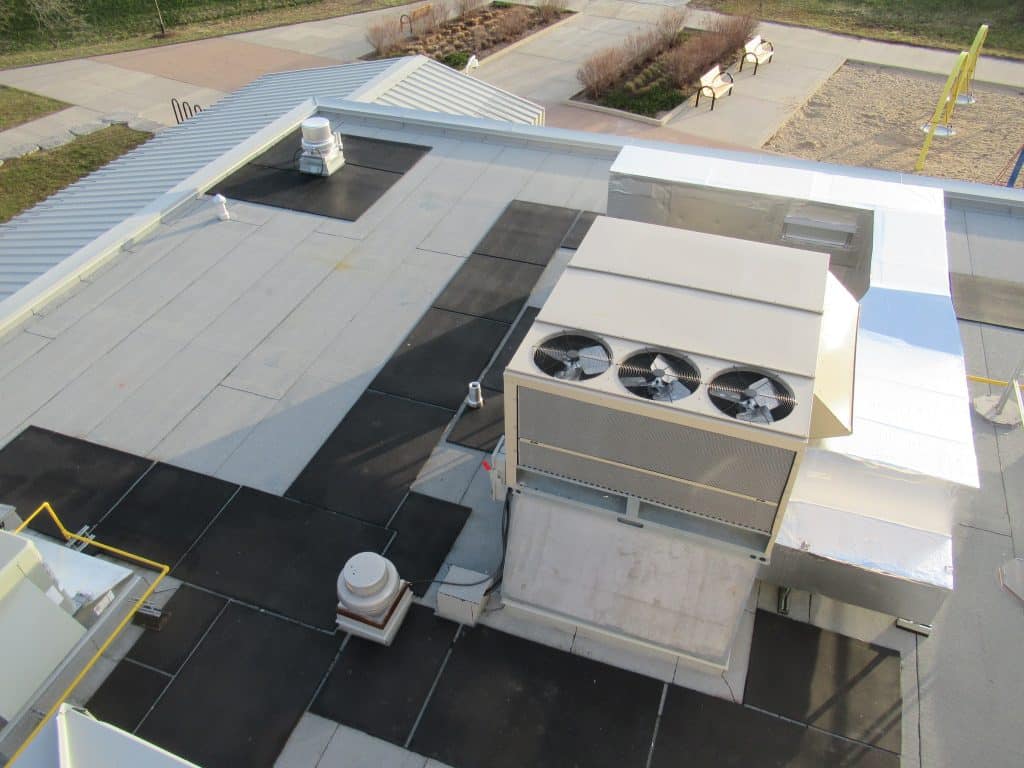500 Hood Road, Suite 320Markham ONL3R 9Z3

A commercial building envelope refers to the physical barrier between the interior and exterior environments of a commercial structure. It is designed to protect the building's interior from external weather conditions, control the indoor climate, and ensure the comfort of its occupants. The building envelope includes all components of a building that separate its interior from the outdoor environment.
The design and construction of the building envelope are critical for energy efficiency, sustainability, and the overall performance of a commercial building. A well-designed envelope not only minimizes energy consumption by maintaining a stable indoor environment but also contributes to the comfort and health of the occupants by controlling moisture, improving air quality, and reducing noise transmission.

There are numerous building envelope functions. Three categories can be used to group these functions:
The inside of a structure is sealed off to safeguard the people and things inside. It acts as a shell-like defence against the outer world. The building envelope assists in limiting heat loss between interior and exterior environments. The envelope similarly keeps the cool air inside and the heated air outside during the summer.
The building envelope is crucial to a structure's energy efficiency because of thermal, vapor, and air control layers. Less energy is needed and less money is spent on heating and cooling when the air is kept inside and its opposite is kept outside.
Building envelope technologies influence several aspects of a building's energy consumption, including lighting, ventilation, and the energy necessary to heat and cool the building, accounting for about 30% of the primary energy spent in commercial buildings.
Older buildings are less energy-efficient than modern ones since older structures weren't built with envelopes in mind.
There are two types of definitions for building envelope systems: tight and loose. Few air leaks can occur in a tightly sealed building envelope versus a loose envelope. The insulation, sealing agents, and windows account for most of these differences.
People have more control over the indoor environment the more tightly the building shell is sealed. This is why a tight envelope is preferable to a loose envelope. It gives the people inside more control over the temperature and moisture.
Commercial and industrial buildings that are well-sealed provide better comfort control, fewer moisture problems, and superior energy efficiency. Naturally, a tighter seal results in less natural ventilation, necessitating a greater requirement for mechanical ventilation.
A loose envelope, on the other hand, enables more natural ventilation, allowing more outside air to enter without the use of mechanical devices. Although loose envelopes can be intentionally created, they can also be the result of faulty construction.
Unwanted moisture (mold and mildew, for example), indoor air quality that may be impacted by adjacent contaminants, less effective operation of other building machinery, and more loss of heat and air conditioning all contribute to the downsides of loose building envelopes.

The foundation of a building is often composed of concrete wall systems, footings, and slabs. The foundation's function is to transfer the weight of a building to the earth underneath.
The foundation must provide moisture control (waterproofing and proper drainage) and resist the transfer of thermal energy as part of the building envelope.
A building's envelope is not complete without walls because they offer support, control, and finishing.
The outer walls' structural elements provide the necessary support. Wall system components that control thermal energy as well as aid walls to resist moisture and condensation include insulation, exterior cladding and sheathing, a vapour barrier, and internal sheathing.
Building roofing assembly is an important part of the envelope. No building is complete without a properly designed and built roofing assembly that comprises all building envelope control layers.
Roofs are always under stress from environmental factors such as rain, snow, wind, UV, and temperature fluctuations.

Building envelope airtightness needs to be taken into account and managed in construction. The envelope becomes looser as more outside air enters the internal space, which might lead to the previously noted heating and cooling issues, and most importantly condensation problems in heating seasons.
Membranes, spray foams, sealants, and sheathing are a few remedies for air leakage. Up to 20% of a building's energy used for heating and cooling can be attributed to these air barrier systems.
Every building is mobile. Building materials shift as a result of ground movement, weather changes, and temperature variations. These movements must be allowed by the building envelope.
Too rigid walls and foundations (i.e., those that don't permit any differential movement) can crack and break under less force than a more flexible construction would.
Regarding the comfort of the occupants, a building envelope does more than just assist in regulating the climate of a structure. Additionally, the envelope needs to be soundproofed from any outside noise.
People who work in the building can conduct their activities with less interruption from the outside thanks to the attenuated acoustics.
The physical barriers separating a structure's inner and outside environment are known as the building envelope. The building envelope, in general, is made up of a number of parts and systems that shield the interior space from environmental factors like precipitation, wind, temperature, humidity, and UV radiation.
The inhabitants, furniture, building components, lighting, machinery, equipment, and HVAC (heating, ventilation, and air conditioning) systems make up the inside environment. Professional building envelope engineering Ontario services can help you design and build efficient envelopes.
1. What are the main functions of a building envelope? The building envelope supports the structure, controls heat, air, water, and condensation flow, and contributes to aesthetics.
2. What benefits do tight building envelopes offer? Tight envelopes provide better control over indoor environments, including temperature and moisture, enhancing comfort and energy efficiency.
3. How does a loose building envelope differ from a tight one? Loose envelopes allow more natural ventilation but may lead to moisture, indoor air quality, and machinery operation issues.
4. What are some key components of a commercial building envelope? Foundation, walls, roofs, airflow management, shifting load accommodation, and soundproofing are important parts.
5. Why is thermal control important in the building envelope? Thermal control prevents heat loss in winter and heat gain in summer, contributing to energy efficiency and occupant comfort.
For any concerns about commercial building envelope. Our expert team is based at 2800 14th Ave, Unit 13, Markham, ON L3R 0E4, proudly serving the Toronto area. To connect with us in Toronto, dial 416-939-0129. If you're in the Durham Region, reach out at 416-871-7453. Count on us for comprehensive building science solutions tailored to your needs.

Naji Hassan, a renowned professional in Building Science and Engineering, brings a wealth of knowledge and experience to his field. Educated at Beirut Arab University and Harvard Business School Online, Hassan has honed his expertise in structural and municipal engineering, building science, and business management. As the President of Accent Building Sciences and an experienced Senior Project Manager, he has made significant strides in building envelope engineering, building condition assessments, and energy retrofit programs. His commitment to innovation and excellence is evident in his approach to large-scale project management and his active participation in industry organizations. Hassan is not only a leader in his field but also a prolific writer and thought leader. He regularly shares his insights and experiences through articles on LinkedIn, which can be found at LinkedIn Articles. Additionally, he maintains a blog where he delves deeper into various aspects of building science, accessible at Accent Building Sciences Blog. Outside of his professional pursuits, Hassan enjoys travel, golf, languages, gardening, and music, reflecting his diverse interests and well-rounded character. Naji Hassan's journey in building science and engineering is not just a career but a testament to his lifelong dedication to learning, teaching, and inspiring others in his field.

500 Hood Road, Suite 320Markham ONL3R 9Z3